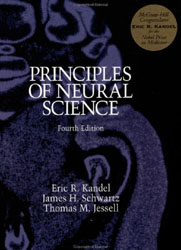- Abeloff's Clinical Oncology (1995; 6th ed., 2019)
- Cancer and its Management (1986; 7th ed., 2014)
- Cecil Textbook of Medicine (1927; 27th ed., 2023)
- Control of Communicable Diseases Manual (1917; 21st ed., 2022)
- Current Medical Diagnosis and Treatment (1961; 64th ed., 2025)
- Diagnostic and Statistical Manual of Mental Disorders (1952; DSM-5-TR, 2022)
- Fields Virology (1985; 7th ed., 2023)
- Ganong's Review of Medical Physiology (1963; 26th ed., 2019)
- Goodman & Gilman's The Pharmacological Basis of Therapeutics (1941; 14th ed., 2022)
- Gray's Anatomy (1858; 42nd ed., 2020)
- Harrison's Principles of Internal Medicine (1950; 22nd ed., 2025)
- Holland–Frei Cancer Medicine (1973; 10th ed., 2023)
- Hurst's the Heart (1966; 15th ed., 2022)
- Informed Consent in Medical Research (2001)
- Lecture Notes on Tropical Medicine (1981; 7th ed., 2014)
- A Manual of Dermatology for Developing Countries (1981; 2nd ed., 1993)
- Merck Manual of Diagnosis and Therapy (1899; 20th ed., 2018)
- Merritt's Neurology (1955; 14th ed., 2021)
- Miller-Keane Encyclopedia & Dictionary of Medicine, Nursing, and Allied Health (7th ed., 2005)
- Miller's Anesthesia (1981; 10th ed., 2024)
- Netter's Essential Histology (2008; 2nd ed., 2013)
- The Oxford Textbook of Clinical Research Ethics (2008)
- The Oxford Textbook of Medicine (1983; 6th ed., 2020)
- Plotkin's Vaccines (1988; 8th ed., 2023)
- Practical Management of Pain (1986; 6th ed., 2022)
- Principles of Neural Science (1981; 6th ed., 2021)
- Rook's Textbook of Dermatology (1968 ; 10th ed., 2023)
- Schwartz's Principles of Surgery (1969; 11th ed., 2019)
- Skin Cancer: Recognition and Management (2nd ed., 2008)
- Sleisenger and Fordtran's Gastrointestinal and Liver Disease (1978; 11th ed., 2020)
- Taber's Cyclopedic Medical Dictionary (1940; 25th ed., 2025)
- Textbook of Pain (1984; 6th ed., 2013)
- Washington Manual of Medical Therapeutics (1942; 37th ed., 2022)
|
